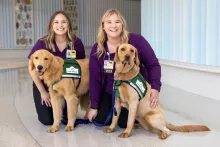New camping-themed child life initiative makes MRI and CT scans less intimidating for young patients
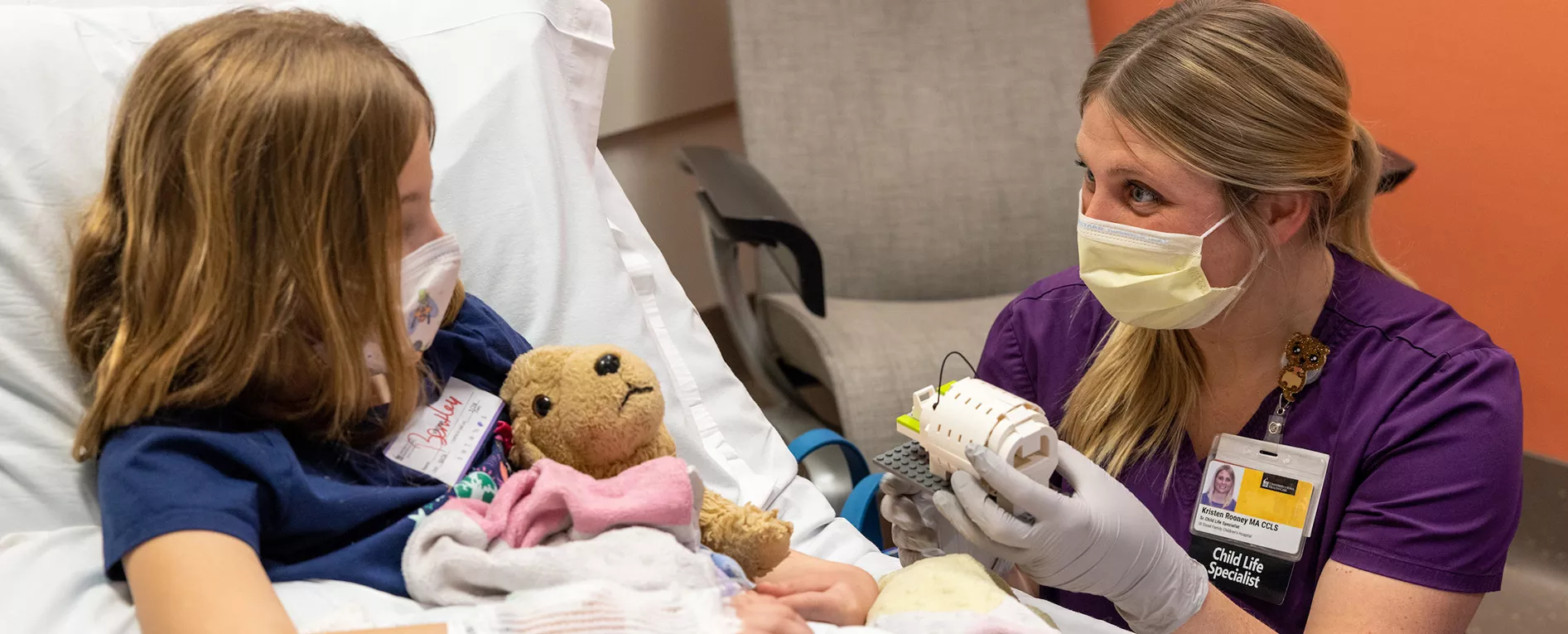
Getting an MRI scan can be intimidating for anyone, but for small children, it can be downright terrifying. Sliding into a huge machine with a narrow metal tube, lying still for minutes at a time, and having to listen to the loud whirring of the magnet sends many kids into a panic.
In fact, some children experience so much anxiety before and during an MRI scan sedation is needed to help them through the procedure.
The child life team at University of Iowa Stead Family Children’s Hospital is working to make the process safer, easier, and less intimidating, as well as less costly, ultimately taking sedation out of the process for as many kids as possible.
“Sedation is not a bad thing,” says Kristen Rooney, a child life specialist who works with patients in the imaging center, “but it does come with some potential downsides for both the patient and their family.”
Some of those downsides include longer wait and recovery times, the inability to eat or drink immediately prior to or after a scan, and the added expense of having an anesthesiologist added to the child’s care team.
The “No S’more Sedation” initiative
The child life team’s “No S’more Sedation” initiative educates patients and their parents about what will happen during the scan and offers tips to help prepare for a scan before coming to the hospital. The team also assesses each patient’s readiness for non-sedated imaging and uses a variety of teaching tools, including a Lego model of an MRI scanner to show patients what will happen.
“These have been helpful tools in educating patients, but once they see the ‘big, scary scanner,’ the stress, fear, and anxiety often return,” says Racheal Niensteadt, manager of the child life team.
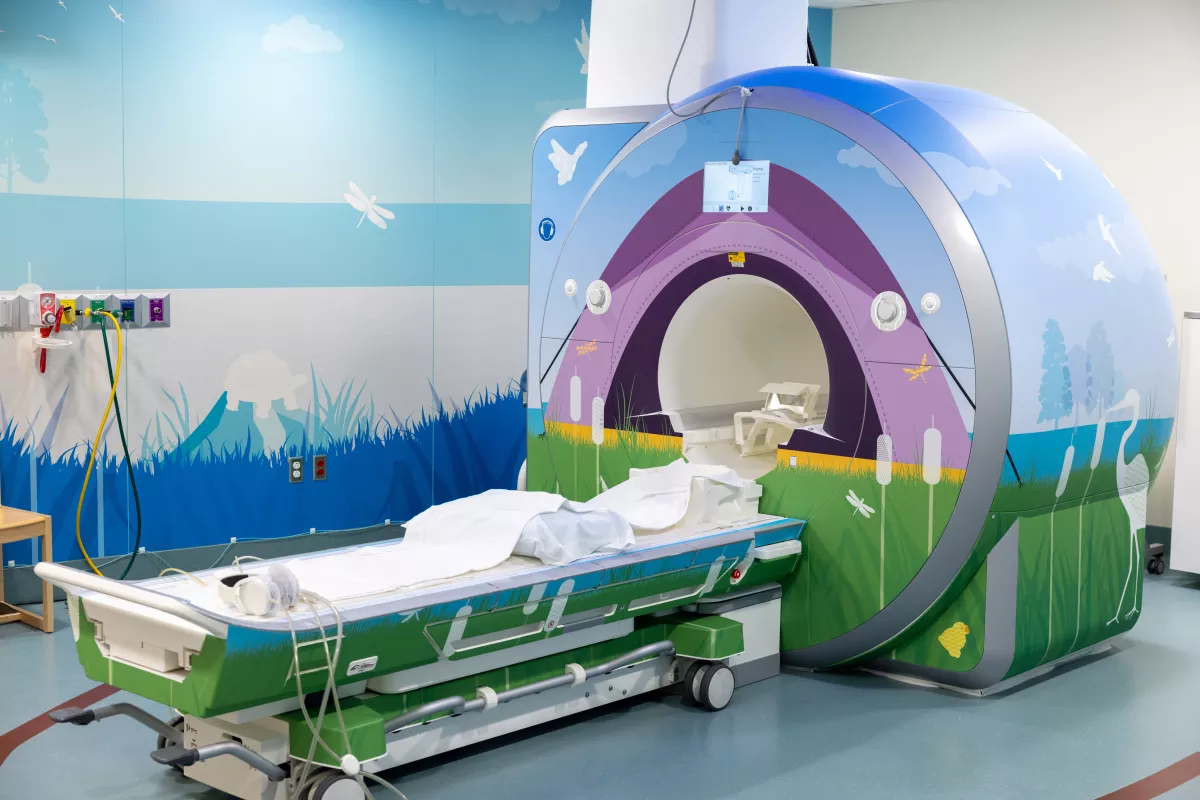
That’s why the child life team also added a fun, colorful camping decor to the giant MRI machine to make it more welcoming—and less intimidating—to young patients.
“Wrapping the radiology equipment with child-friendly designs has been shown to help reduce a child’s anxiety before, during, and after scans,” says Niensteadt.
The initiative has many institutional goals, as well, including increased efficiency, reducing total imaging visit time, and increasing the number of patients who can receive their scans in a day. Without the need for sedation, the duration of the patient visit is significantly reduced.
Creating a better experience for kids
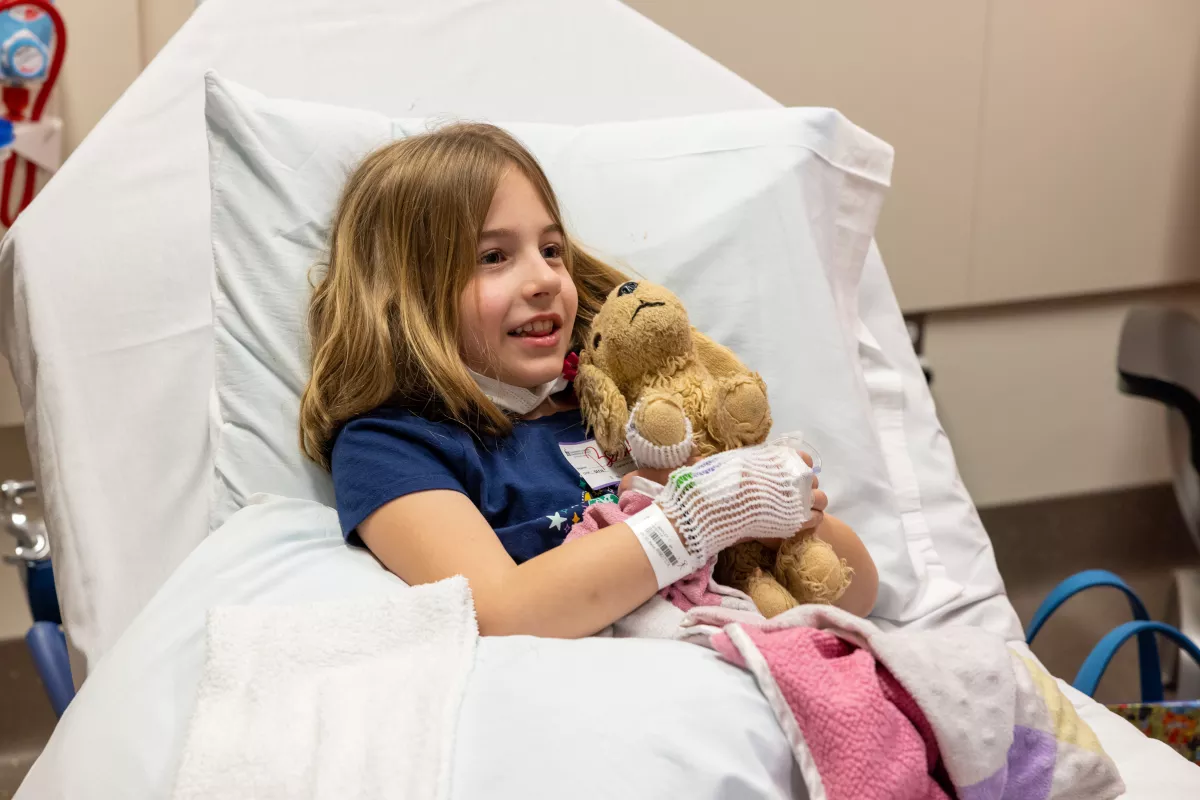
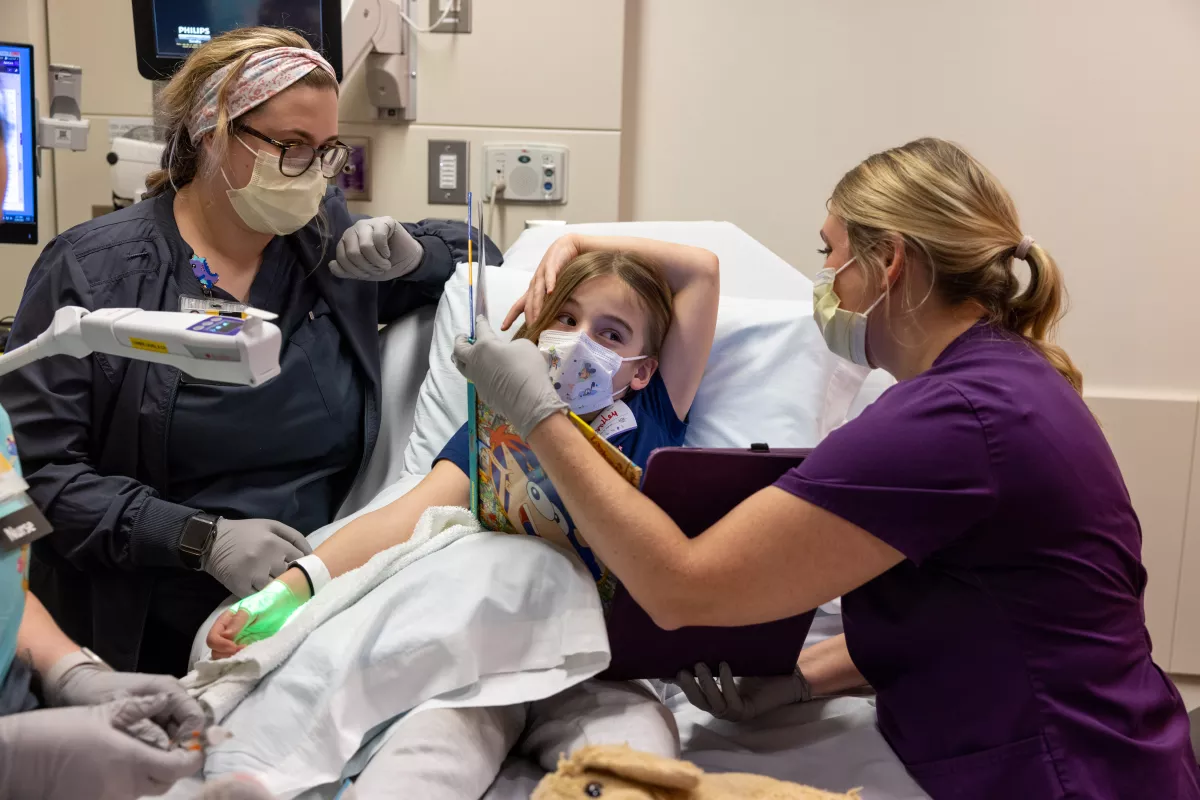
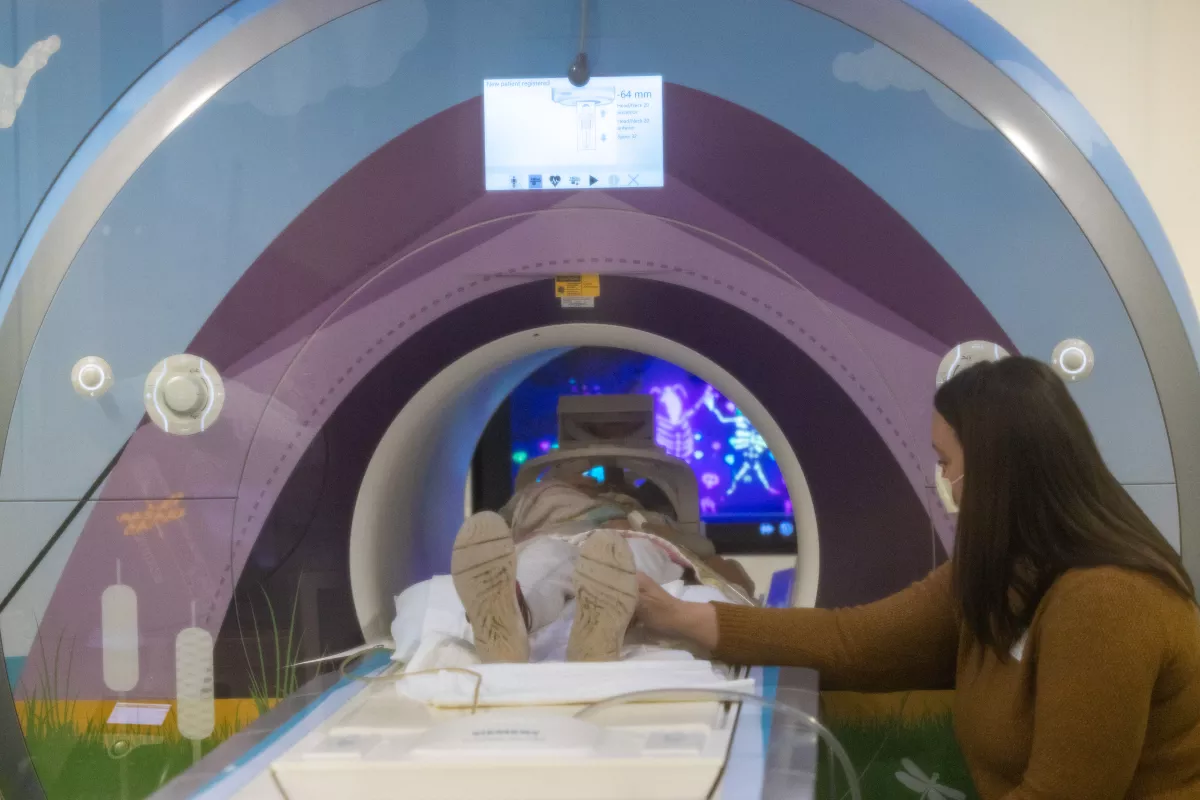
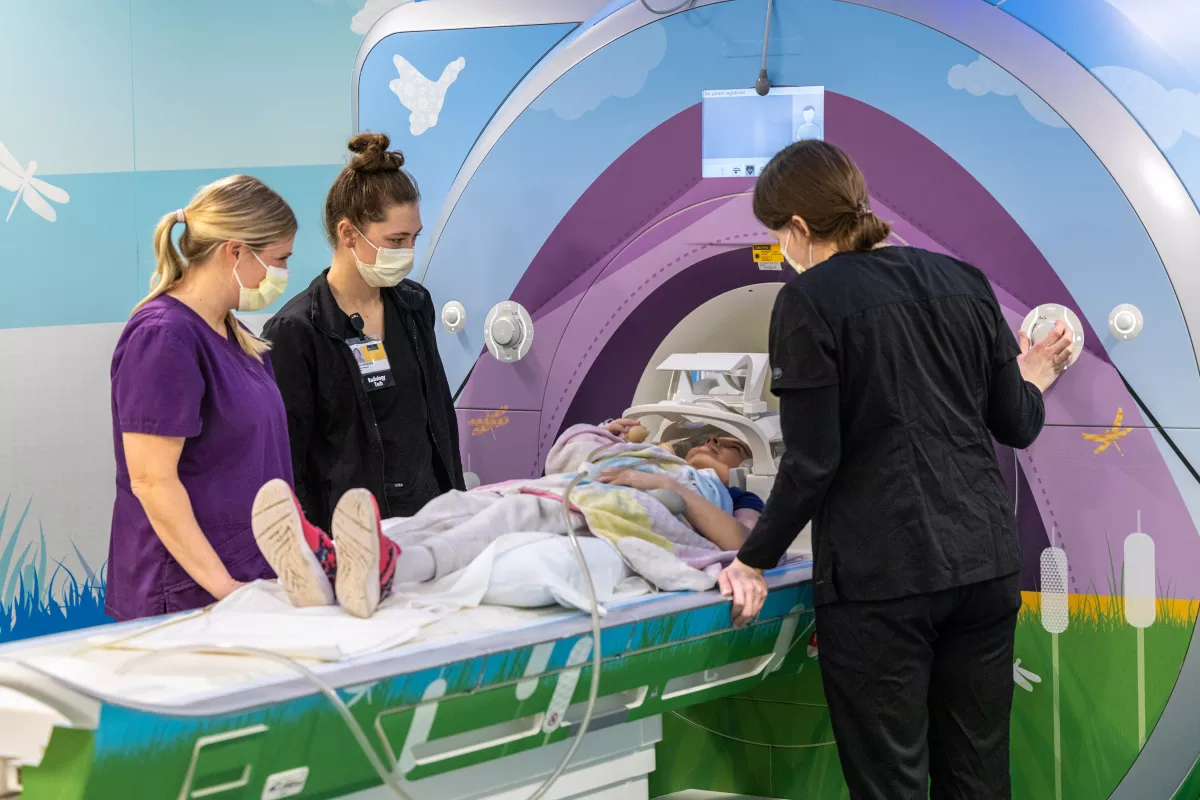
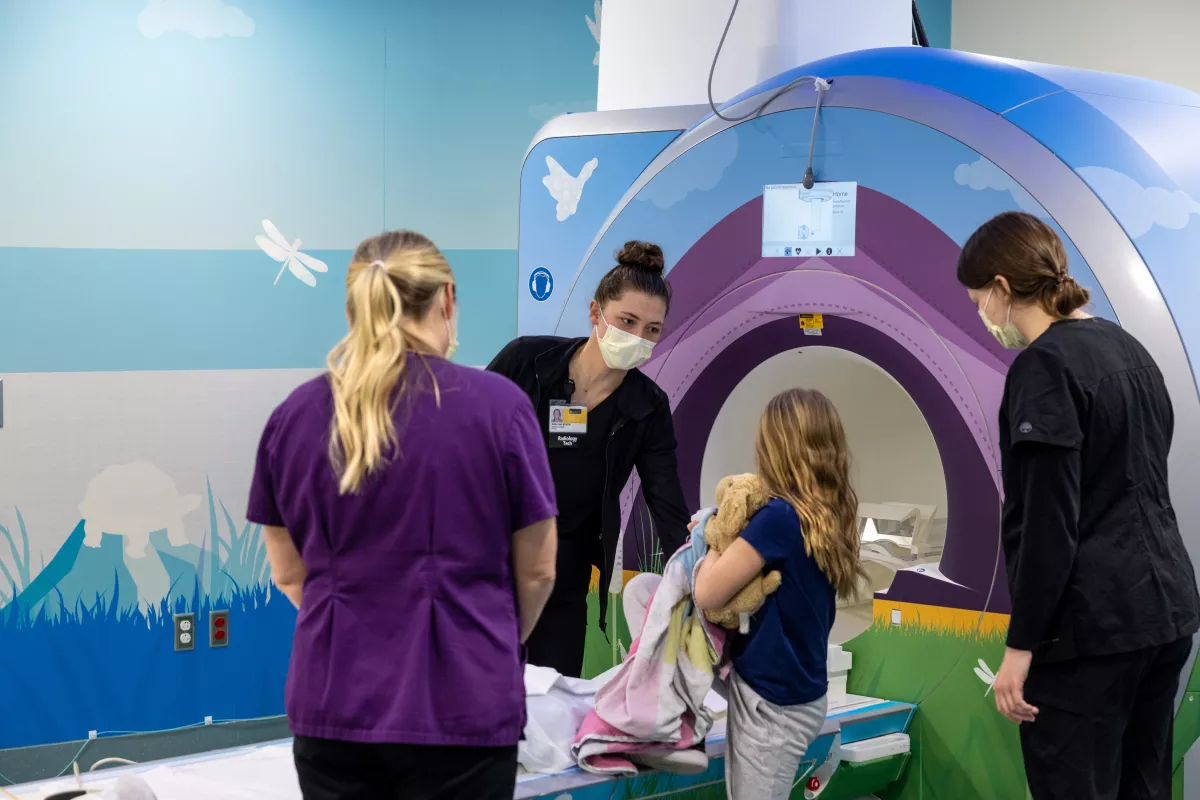
Eight-year-old Bentley Baxter of Mount Pleasant, Iowa, was apprehensive when she first learned she needed an MRI but was able to get through it without sedation thanks to extra help from child life specialist Kristen Rooney.
Using tools from the “No S’more Sedation” initiative, Rooney prepared Bentley by showing her an MRI model, real photos of the new wrap on the MRI, and talking about how going into the MRI is like going into a tent.
Bentley was also able to hear the sounds the MRI makes before going in for her scan and learned she could listen to music or a movie to cover up the noise. She decided to listen to part of “Sing 2” and turned it up loud enough that it covered the sounds of the MRI machine.
“It’s hard to see your child in fear,” says Bentley’s mom, Emily Baxter – who is also a child life specialist at the hospital. “To change that fear by preparing the child and letting them see the ‘big machine’ isn’t that scary helped tremendously. She got to pretend she was camping and watching a movie in a tent.”
Rooney says that’s the outcome the team is hoping for.
“Bentley was a champ, but her experience and others' shows that with a little extra preparation and effort to make the environment more kid-friendly, most kids can successfully complete the scan without sedation,” she says. "This is one of the many ways we are continuously looking to improve the patient experience."

